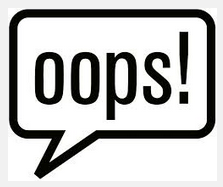Success in trading is measured in terms of the growth of the account balance. A CTA is not expected to play God and call every twist and turn in the market correctly at all times. As a matter of fact, some professional and proven CTA’s systems are only correct 25-30% of the time and they still manage to pull huge profits out of the markets consistently. What distinguishes the “Pros” from their less successful colleagues is their ability (a) to recognize an error promptly and (b) to take necessary action to correct and prevent the error from becoming a financial disaster. Therefore, the key to avoiding “ruin” is simply to make sure that you can live with the financial consequences of one’s errors.
An error of judgment usually results from inaction or incorrect action on the CTA’s part. Such an error will either, reduce the growth of a managed account’s balance or, lead to a reduction in the account balance.
Here is a list of the 4 biggest mistakes one must learn to avoid to have any chance at success:
- There is a commonly held misconception that a profitable trade prohibits the possibility of an error of judgment. (Have you ever heard the saying “You can’t go broke taking a profit”)? The truth is that a CTA can get out of a profitable trade prematurely, just as he or she can exit the trade after giving back most of the profits earned. A CTA must understand and display they can stay in a winning trade and a have an air-tight exit strategy for profitable trades. In my experience it is harder psychologically to ride a winning trade then cut a small loser.
- Along the same line, another blunder a CTA can make is ignoring and not taking a trade that turns out to be a highly profitable trade. In my experience this usually happens after a CTA has sustained a series of losses and is “afraid” to take the next buy or sell signal (Cherry-picking). A major winner has just whizzed by, and the CTA missed the move. In a period when major rallies are far and few between, the missed opportunity will prove to be quite “expensive”
- When the CTA observes a gradual shrinking of equity, but refuses to get out of the losing trade, he or she has committed another error. Clearly, this error is more serious than the previous two, given the reduction in the account balance. This error will usually result from not using a stop-loss order or having such a loose stop compared to the account’s equity that it negates the Stops purpose.
- Last and the devastating and unfortunately the most common mistake a CTA can make is caused by having too much exposure to a single commodity. For example if you have a $50,000 account balance and short sell 10 contracts of Gold futures at $1200 an ounce and watched it go to $1250 an ounce before getting out, this would result in a $50,000 loss on that one trade, which in essence would wipe out your account (depending on your starting equity).
These are the four biggest mistakes a CTA must avoid, and implement rules into their trading system or methodology to avoid.
